| |
PLWH - Women; Life Expectancy-disparities; Social Determinants; Frailty; Physical & Cognitive Impairment
|
| |
| |
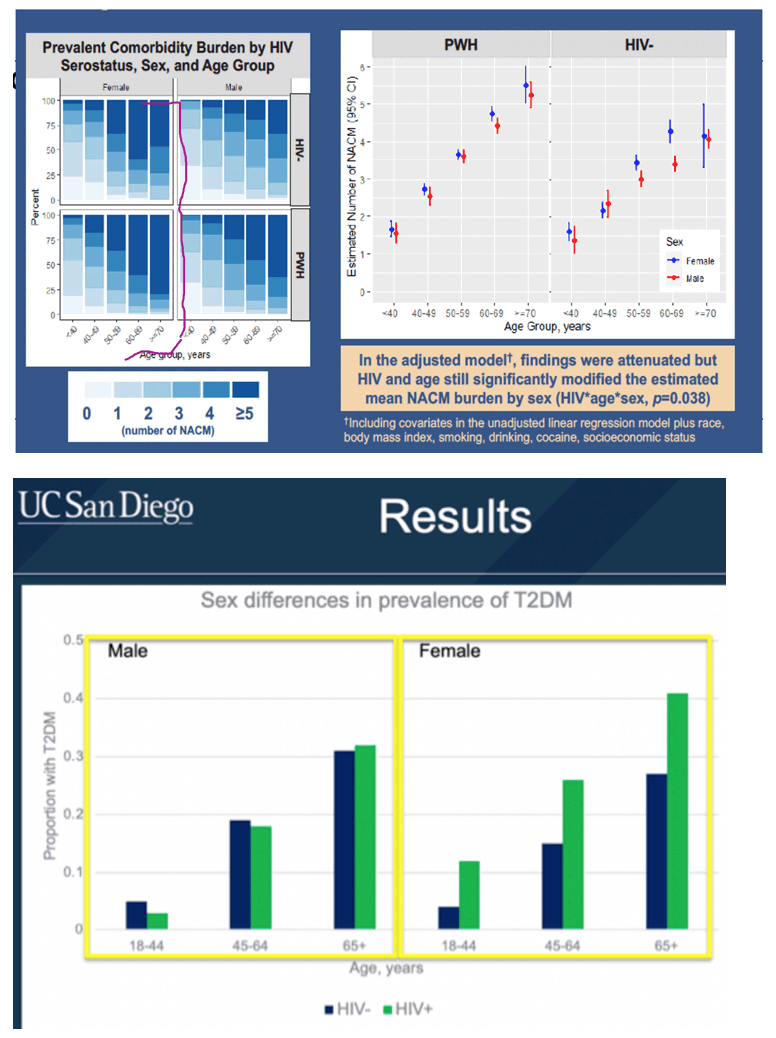
Social Determinants of Health & African-Americans Associated with Chronic Comorbidities & Brain Aging - (12/23/21)
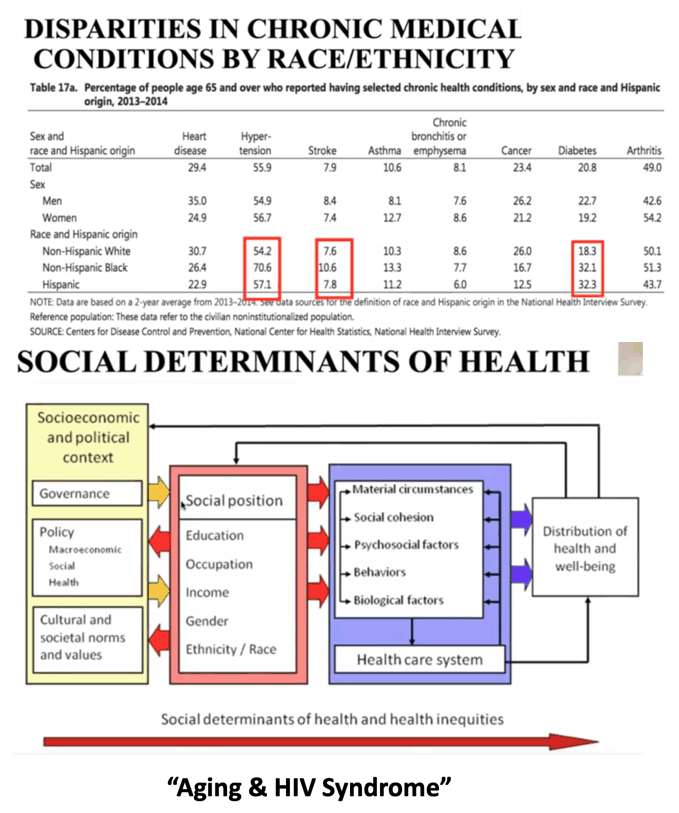
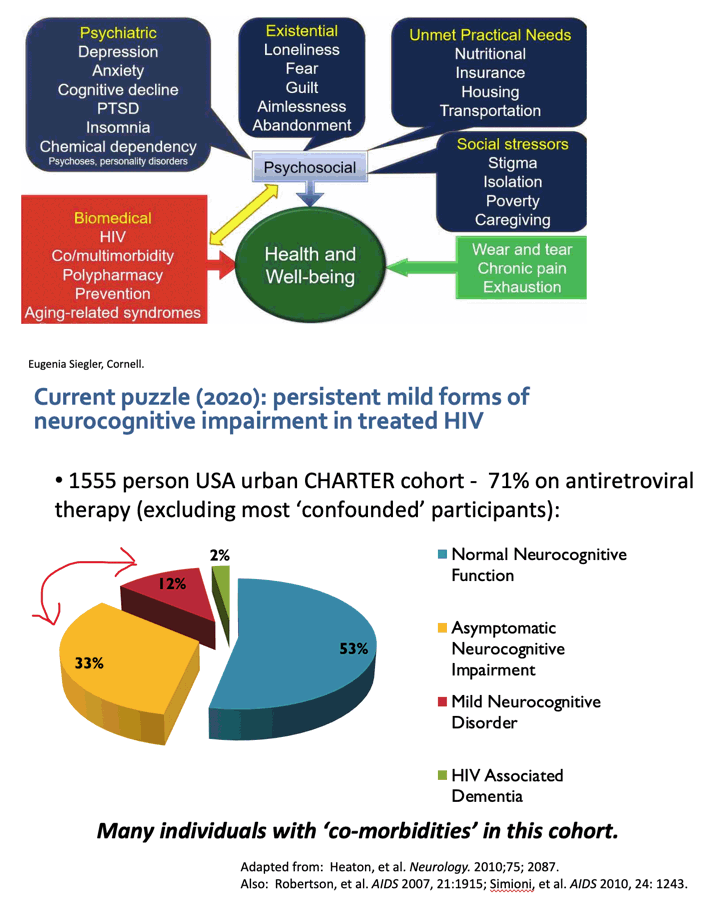
Life Expectancy for PLWH: disparities for Blacks, Women; Frailty High Rates in MACS, Physical Impairments by Age Worsen; Cognitive Impairment in Older PLWH
In this large cohort of individuals with HIV infection and matched uninfected adults with access to health care in the US, we found a 9.1-year difference in overall life expectancy from 2011 to 2016, and the difference was smaller (6.8 years) for individuals with HIV infection who initiated ART at high CD4 cell counts - 500 or 350.
From 2000 to 2003, the expected number of comorbidity-free years remaining at 21 years of age was 11.3 years for individuals with HIV infection and 26.6 years for uninfected adults, corresponding to a difference of 15.3 years (95% CI, 13.9-16.6 years) (Figure 1).
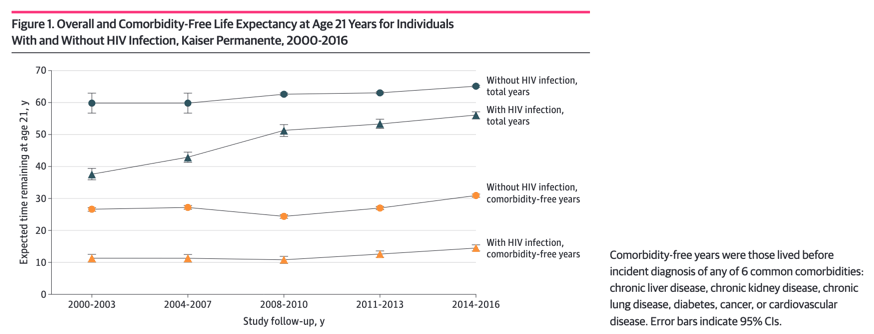
https://www.natap.org/2020/HIV/marcus_2020_oi_200340(1).pdf
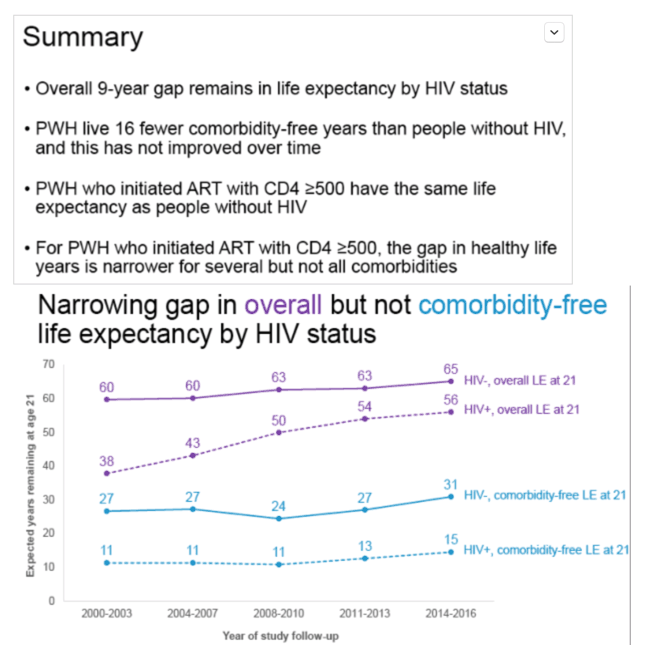
https://natap.org/2020/CROI/croi_134.htm
"I'm Just Forgetting and I Don't Know Why": Exploring How People Living With HIV-Associated Neurocognitive Disorder View, Manage, and Obtain Support for Their Cognitive Difficulties - study interviewing 25 PLWH average age 51 diagnosed with HAND (HIV-associated neurocognitive disorder) - (12/13/21)
Sex and race disparities in premature mortality among people with HIV: a 21-year observational cohort study - Premature Mortality Higher in Women and Blacks in US HIV Group - (10/01/21)
Life Expectancy 8-9 Year Gap
In summary, despite a dramatic increase in life expectancy for HIV-infected individuals, an approximately eight-year gap in survival persists by HIV status in recent years, even with ART initiation at high CD4 counts (JAIDS 2017, Marcus, Kaiser) .. In this large cohort of HIV-infected and HIV-uninfected individuals with equal access to health care, we found a steep increase in life expectancy at age 20 for HIV patients since the introduction of ART, reaching 53 years by 2011. However, even with ART initiation at CD4 counts above 500 cells per microliter, a nearly 8-year gap in survival persisted between HIV-infected and HIV-uninfected individuals in recent years, with the lowest life expectancies reached by HIV-infected blacks and individuals with a history of IDU, and the highest for Hispanics. Similar to previous studies,3,4,6,28 HIV-infected subjects with a history of IDU had the smallest survival gain, reaching a life expectancy at age 20 of 46 years in 2008-2011. We found that Hispanic and white HIV-infected individuals reached higher life expectancies than blacks, a pattern that mirrors that observed for HIV-uninfected individuals in our study and the general population in the United States.24 Among HIV-uninfected subjects, we also observed a small decrease over time in life expectancy for blacks, and an increase for Hispanics. Numerous studies have found higher mortality rates for HIV-infected blacks compared with other HIV-infected racial/ethnic groups,32-35 which may be attributable to reduced ART initiation36-38 or adherence39 as we have previously observed,40-42 or to a higher risk of comorbidities such as hypertension and cancer.43 These racial/ethnic disparities are a primary focus of the National HIV/AIDS Strategy.44
https://www.natap.org/2017/HIV/Narrowing_the_Gap_in_Life_Expectancy_Between.6.pdf
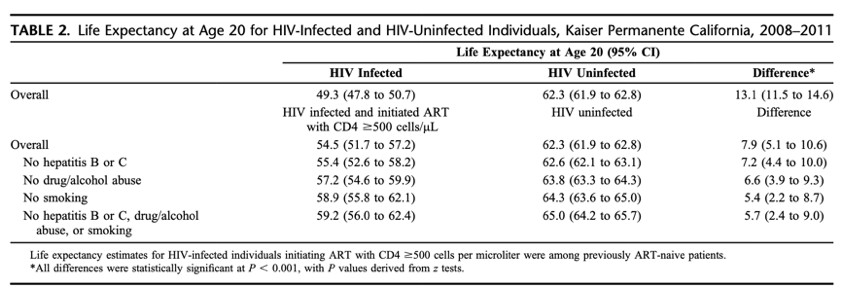
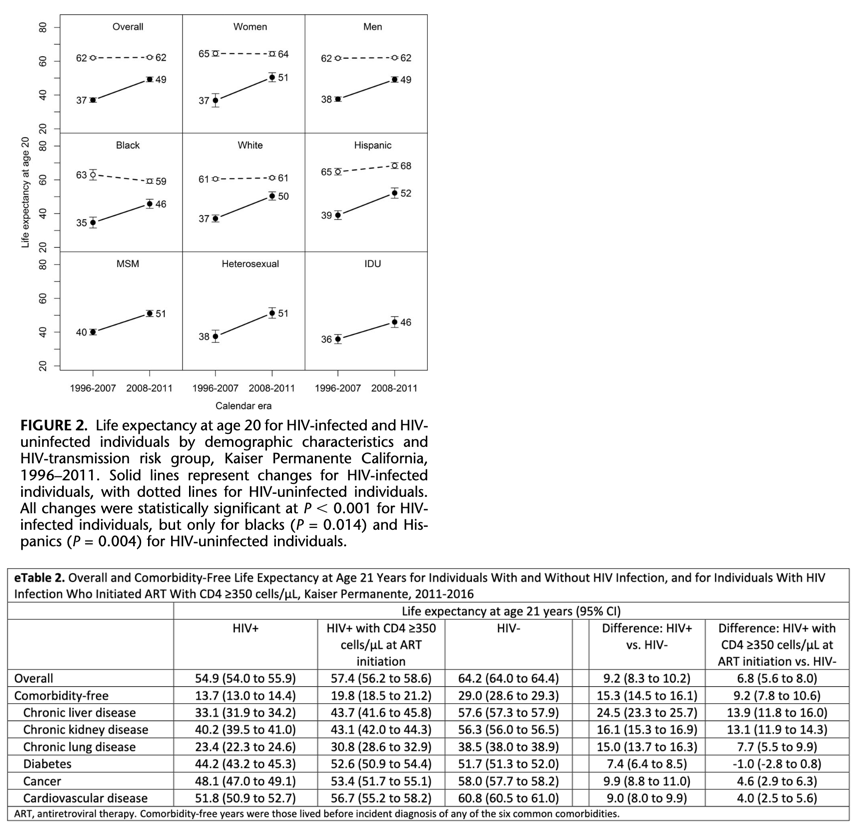
https://www.natap.org/2020/HIV/zoi200340supp1_prod.pdf
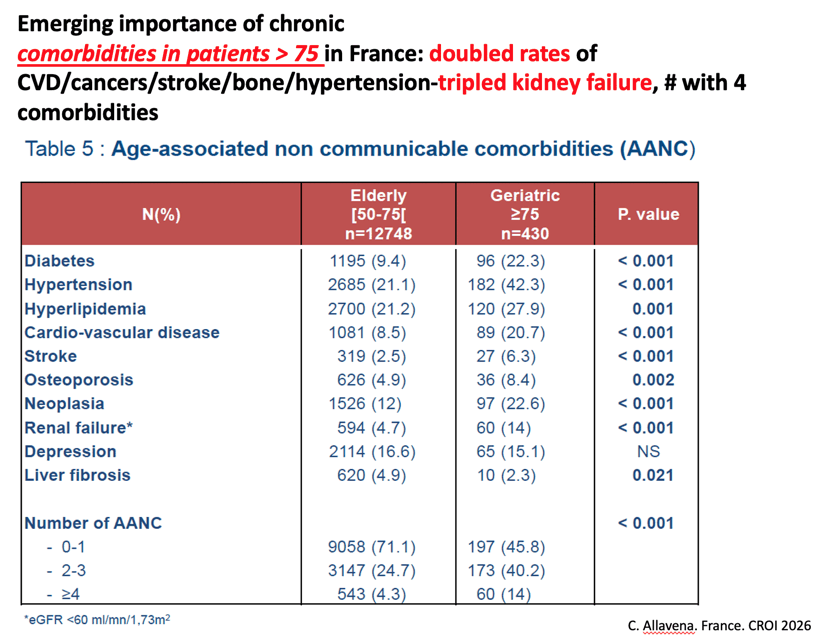
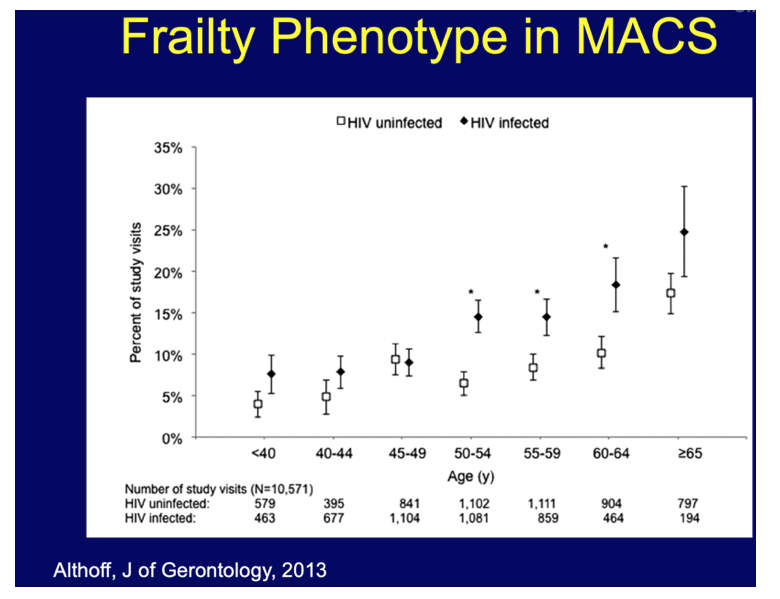
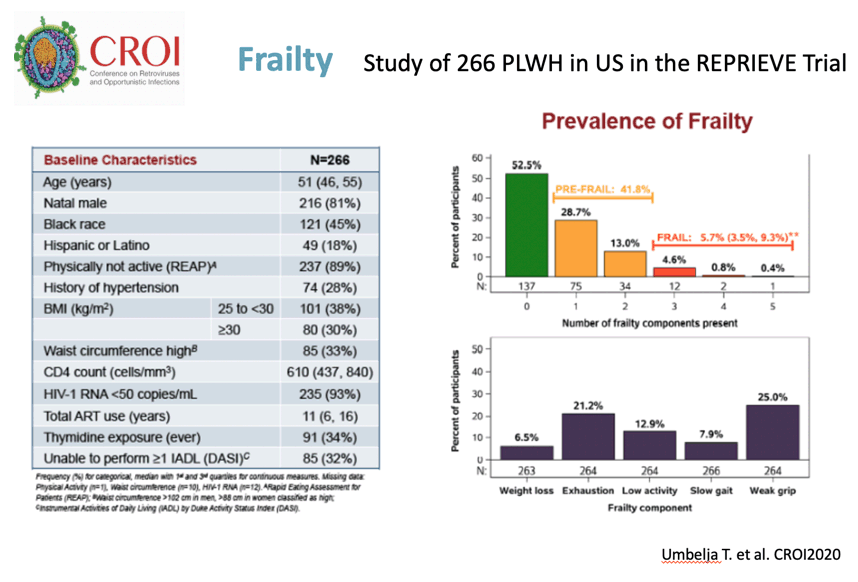
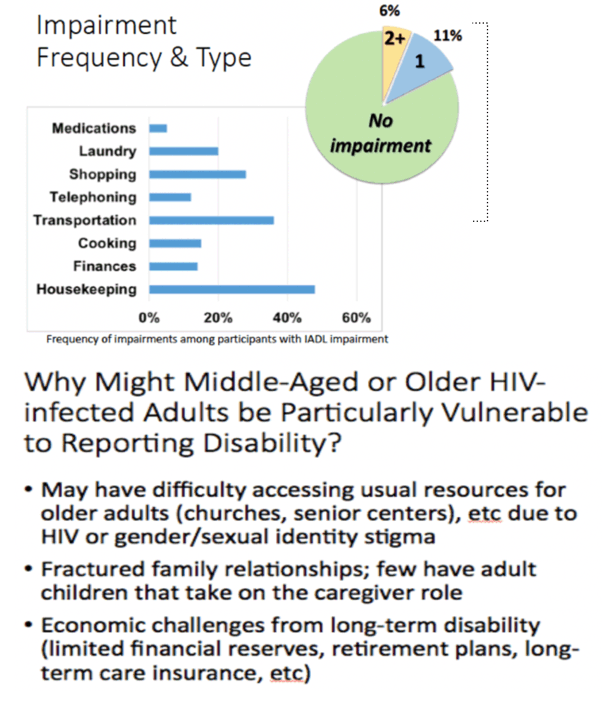
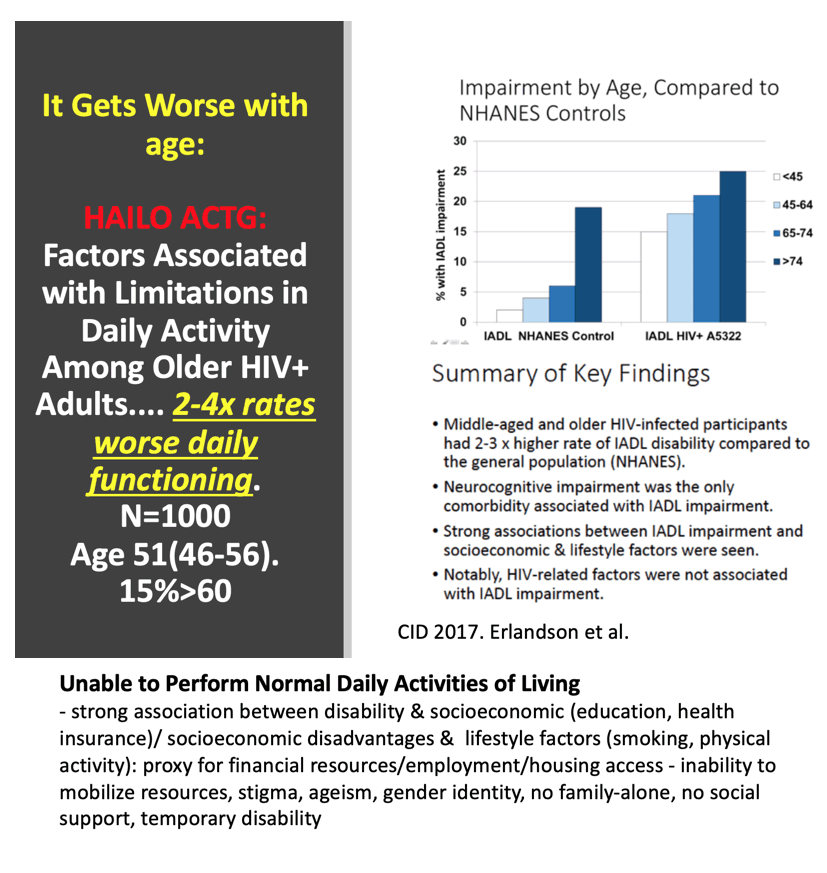
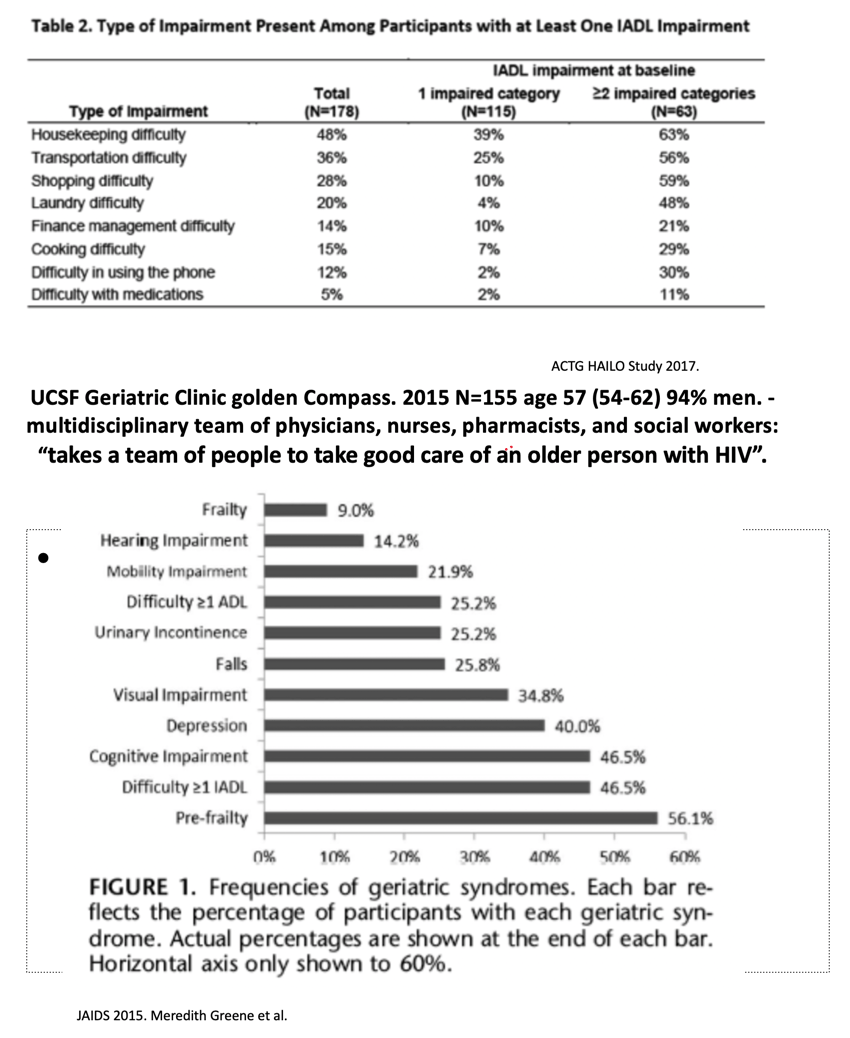
|
|
| |
| |
|
|
|